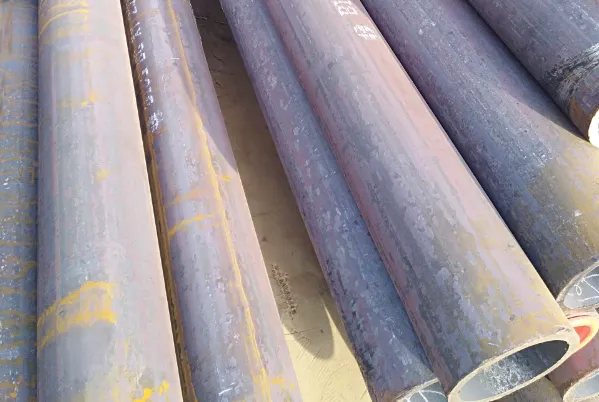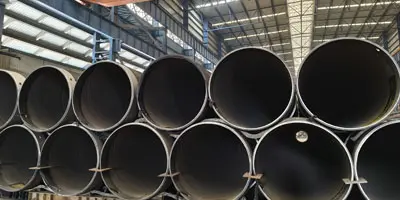Stainless steel vs. carbon steel. There are many questions about both types of steel. Which one should I use? What are its disadvantages? Is one stronger than the other? Which lasts the longest in good condition? What is the difference between one and the other? Procurement Management will answer these and other questions in this article.First, define each term. As the name suggests, the main characteristic of stainless steel is that it is rust-resistant. It is an alloy of iron, nickel, carbon, and at least 10.5% chromium. Depending on the type of stainless steel it may contain other alloying elements such as molybdenum, vanadium, sulphur etc.
Choosing the right type of steel for your project can make a big difference in cost, performance, and durability. When it comes to two of the most common options—mild steel and stainless steel—each has unique characteristics that make it suitable for specific uses.Understanding the differences between these two materials is essential, whether you're building a structure, manufacturing a product, or choosing a material for everyday tools. In this article, we'll explore what sets mild steel and stainless steel apart, their benefits, and when to use each one.
Stainless steel vs. carbon steel
As for carbon steel, it is one of the important products of the industry, since, as we all know, 90% of the steel produced in the world throughout history is carbon steel. Its composition is complex, consisting mainly of iron and carbon, but also of other alloying elements such as silicon or manganese, sulfur, phosphorus, etc. The last two as well as other impurities are considered difficult to extract from the final product. On the other hand, the greater the amount of carbon in the composition, the higher the tensile strength, but the cold brittleness index increases, and the ductility and toughness of the product decrease.
Carbon steels can be divided into three categories, depending on the amount of carbon contained in the composition:
Medium carbon levels
High carbon levels (between 0.3% to 1.7% carbon)
Ultra-high carbon levels (1% to 2% carbon)
The most common are usually low carbon steels, which are easier and less expensive to manufacture due to their greater ductility.
Differences
The main difference between these steels is the amount of chromium used in their composition. Chromium (Cr) is the chemical element that provides stainless steel with an inert chromium oxide layer, which allows this corrosion resistance.
What Is Mild Steel Pipe?
Mild steel, also known as low carbon steel, contains a small percentage of carbon—typically between 0.05% and 0.25%. This low carbon content makes it softer, more ductile, and easier to form or weld.
Because of its affordability and versatility, mild steel is one of the most widely used materials in construction and manufacturing. It’s commonly found in:
Beams and structural frames
Machinery parts
Fencing and gates
Automotive panels
Furniture frames
Mild steel is ideal for applications where high strength isn’t the primary concern and where corrosion can be controlled with coatings or paints.

Definition and Types of Stainless Steel Pipe
Stainless steel is an alloy steel that has a higher carbon content than normal carbon alloy steels. It has a high chromium content that provides high corrosion resistance. Stainless steel has a chromium content of up to 10-20%, depending on the grade, and a carbon content of up to 1.2%. Due to the high chromium content, iron oxidation does not occur in stainless steel. Additional alloying elements such as nickel, molybdenum, copper or titanium provide high mechanical strength and improve physical properties. It is mainly used in tableware such as cookware and knives.
Differences Between MS Pipe and Stainless Steel Pipe
While both materials are types of steel, the differences in their composition lead to distinct mechanical and physical properties. Here's a quick overview of the most important differences:
|
Feature
|
Mild Steel
|
Stainless Steel
|
|
Carbon Content
|
0.05% – 0.25%
|
Up to 1.2% (varies by grade)
|
|
Chromium Content
|
Minimal or none
|
At least 10.5%
|
|
Corrosion Resistance
|
Low
|
High
|
|
Weldability
|
Excellent
|
Moderate to good
|
|
Strength
|
Moderate
|
Higher strength, especially at heat
|
|
Cost
|
Low
|
Higher due to alloying elements
|
|
Appearance
|
Dull or matte
|
Bright, reflective, polished
|
|
Machinability
|
Easy to cut and shape
|
Requires harder tools and more care
|
Durability and Maintenance
Stainless steel clearly outperforms mild steel in terms of corrosion resistance and overall durability. It requires little to no maintenance and does not need protective coatings.
In contrast, mild steel must be painted, powder-coated, or galvanized to prevent rust. Without protection, it degrades quickly when exposed to moisture or chemicals.
Cost Considerations
Budget often plays a major role in material selection. Mild steel is cheaper upfront and easier to fabricate, making it more suitable for low-cost, large-scale projects.
Stainless steel has a higher initial cost, but its longevity and minimal maintenance often lead to lower lifetime costs. If you need long-term performance in a challenging environment, stainless steel may provide better value over time.
Fabrication
As chrome is a hard alloy, stainless steels are much more impact resistant compared to mild steel and (although relatively easy to fabricate) are not as easy to fabricate as mild steel. Mild steel is much more malleable compared to stainless and so is used a lot in general fabrication.
Advantages of Mild Steel Pipe
Mild steel is often selected for its simplicity and ease of use. It offers:
Low cost per unit, making it ideal for large projects
High malleability and ductility for shaping and forming
Excellent weldability for quick fabrication
Readily available in many shapes and sizes
For indoor applications or environments where moisture is controlled, mild steel can perform well with minimal maintenance when coated or painted properly.
Advantages of Stainless Steel
Stainless steel is chosen when performance and durability matter more than cost. Its key benefits include:
Superior resistance to rust, oxidation, and chemical exposure
Long lifespan with minimal maintenance required
Attractive and professional appearance, ideal for consumer-facing products
Resistance to heat, making it suitable for industrial and high-temperature use
Stainless steel is especially valuable in applications where hygiene is critical, such as food processing or medical equipment.
Is stainless steel stronger than mild steel?
Yes, it is stronger than mild steel. Unlike mild steel, it contains alloying elements. It is a high carbon steel. It also has a higher chromium content. It is used for tableware such as cookware and knives. Mild steel has lower tensile strength, yield strength, and hardness.
To summarize the differences between stainless steel and mild steel
Stainless steel is stronger than mild steel. It has high tensile strength, yield strength, hardness, and corrosion resistance. It is a high carbon steel that contains more alloying elements. It is mainly used for tableware such as cookware and knives. It has a shiny, polished, and lustrous appearance. This makes it a good building and construction material.






 English
English Español
Español بالعربية
بالعربية











 Phone :
Phone :  Whatsapp :
Whatsapp :  Email :
Email : 


